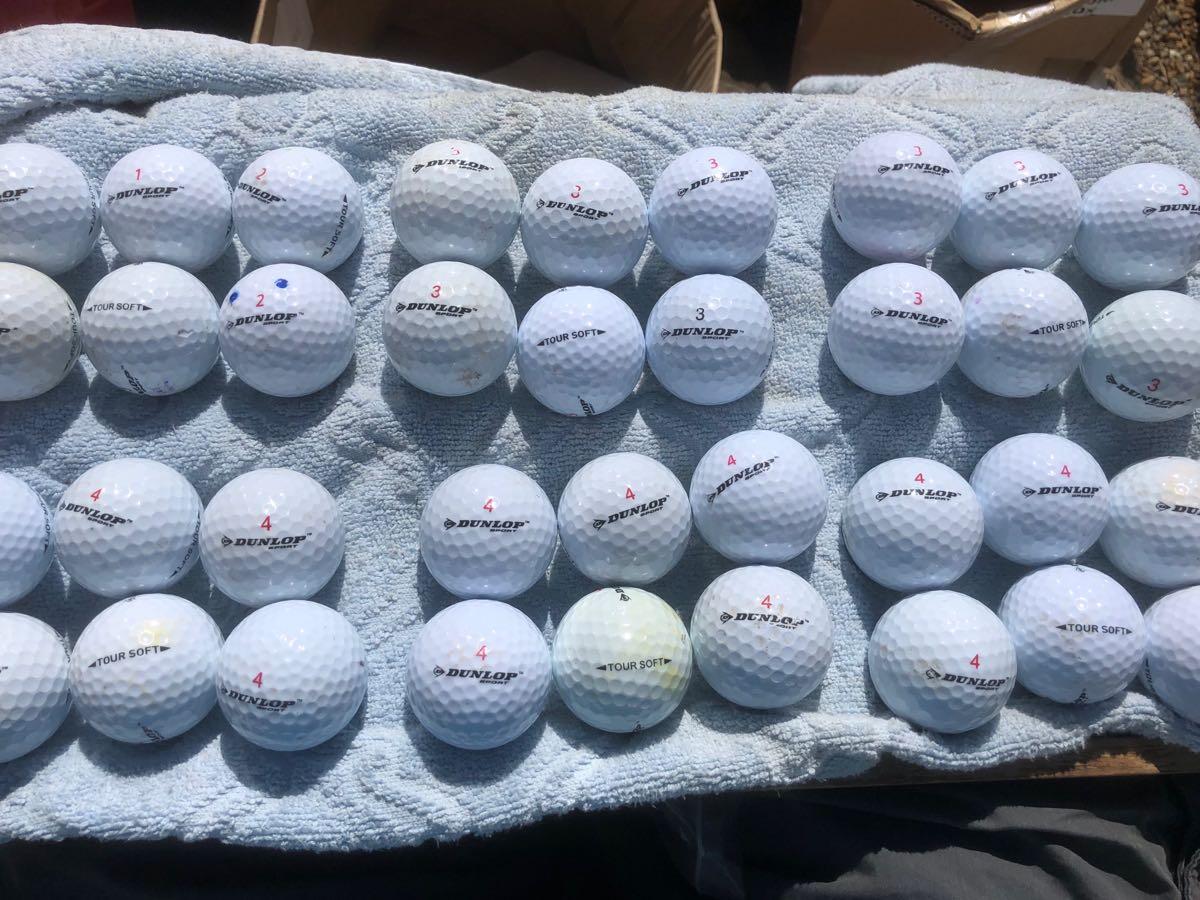
The company is also seeing a rise in Callaway Truvis balls (soccer ball patterned) as well as well as yellow, pink and other colored balls. In fact, has even started to sell the Titleist AVXs, which were only available in test markets (and have already been recovered in California), as well as the new Titleist Tour Softs, which are already being recovered. They account for approximately 40 percent of the company's sales.

#USED DUNLOP GOLF BALLS PRO#
And that would be Titleist Pro V1s, of course. It's not difficult to figure out what brand of used golf balls sells the best. Independent testing in California showed that the higher-rated recycled golf balls tested like new balls, and in some cases even flew farther, which could be attributed to the dimple patterns being somewhat smoother because they're a little worn. The best ones, AAAAA, look pretty much brand new, and the next grade down, AAAA, have minor blemishes but pretty much play like new. Workers sort the balls according to grade. They're shipped by truck to the company's large warehouse, sorting and washing facility, which can house 20 million balls at a time. It is conceivable that you could actually buy your own golf balls back after you dunk one in a pond. But does ship its product to golfers in Hawaii. Hawaii is on the list because shipping them back from Hawaii to Houston would be cost prohibitive. The company harvests golf balls from more than 2,400 golf courses, from every state except Alaska, Hawaii, North Dakota and South Dakota. Last year, sales were close to 55 million and reaches out to nearly 5 million golfers, according to Semih Dilek, director of e-commerce for. Since 1992, has sold more than 650 million golf balls. The operation began in a garage using washing machines. The company was started more than 25 years ago by four former Texas A&M golfers, who used their connections in the golf industry to contract divers at various golf courses, starting primarily in Texas. The largest online retailer of used golf balls is, located in Sugar Land, just southwest of Houston. In fact, some golfers have been known to buy high-grade used balls and put them back in their old sleeves.īefore you go used, check out clearance page for deep discounts on new golf balls and more | View current sales


Golf balls recovered in the saltier waters of Florida and Louisiana deteriorate a little quicker than balls found in the colder lakes and ponds of the Pacific Northwest, for example.īuy the top-graded golf ball, and it's almost impossible to tell from new. It also depends on where the golf balls are lost. And the balls are sold according to grade, so you get what you pay for. The good news, these days, though, is that the companies that sell millions of recycled golf balls make their runs often in the same locations, so they're not spending much time in the water. And you don't want anything that's been underwater for a year. You have to beware of companies that might repaint inferior balls (refurbished), often distinguished by a non-genuine logo. Open qualifier, break out the new sleeves.)ĭoes that mean all recycled or refurbished balls are the same? Of course not. The truth is golf balls are so well made today that they can spend a few nights or even weeks in the water and come out just fine - at least for casual play. But much of that was before the solid core technology and advanced cover materials used today. The golf manufacturers have long made claims that balls recovered from water lose a significant amount of performance. Well, that's true, but probably to a lesser degree than you think. Yet buying recycled golf balls is beneath many players and for good reason.Īfter all, these golf balls are usually harvested from ponds, streams and lakes, and water has to be bad for them, right? If we find a good one (such as a Titleist Pro V1) at the edge of the woods, most of us will put it in play at some point. Of course, if they're used, it's far less painful.īut there's certainly a stigma associated with playing used golf balls. But what's more painful, the 26 you made on the hole or the dozen golf balls you just lost? If you're like most regular golfers, it's the $30-$50 you just drowned. It might not have come on a par 5 but on a par 3 - you basically find yourself pumping most of your ball supply into the water as you stubbornly try to reach the green over a hazard. If you've played golf long enough, you've probably had that "Tin Cup" moment.

(This story was originally published in 2014, but was updated on April 18, 2018.)


 0 kommentar(er)
0 kommentar(er)
